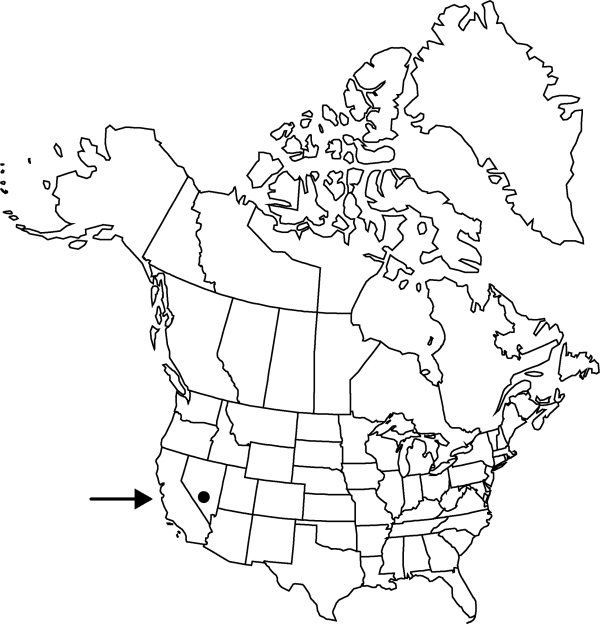Lewisia maguirei
Leafl. W. Bot. 7: 136. 1954.
Taproots gradually ramified distally. Stems spreading to suberect, 1.5–2 cm. Leaves: basal leaves withering at or soon after anthesis, sessile, blade narrowly oblanceolate, somewhat flattened, 1–2 cm, margins entire, apex obtuse; cauline leaves absent. Inflorescences racemose cymes, 2–3-flowered, sometimes with flowers borne singly; bracts 5, proximalmost 3 in whorl, distalmost 2 opposite, subtending 2d (and 3d) flowers, oblong to oblong-obovate, 3–5 mm, apex obtuse. Flowers pedicellate, disarticulate in fruit; sepals 3–4, white to pinkish, 8–12 mm, scarious at anthesis, margins entire, apex obtuse; petals 7–9, white to pinkish, oblanceloate, 8–12 mm; stamens 7–9; stigmas 4–6; pedicel 3–9 mm. Capsules 7–10 mm. Seeds 5–10, 1.5–2.5 mm, smooth.
Phenology: Flowering summer.
Habitat: Open, south-facing slopes on gravelly clay limestone-derived substrates
Elevation: 2200 m
Discussion
Of conservation concern.
Lewisia maguirei is known only from the Quinn Canyon Range, Nye County.
Selected References
None.
